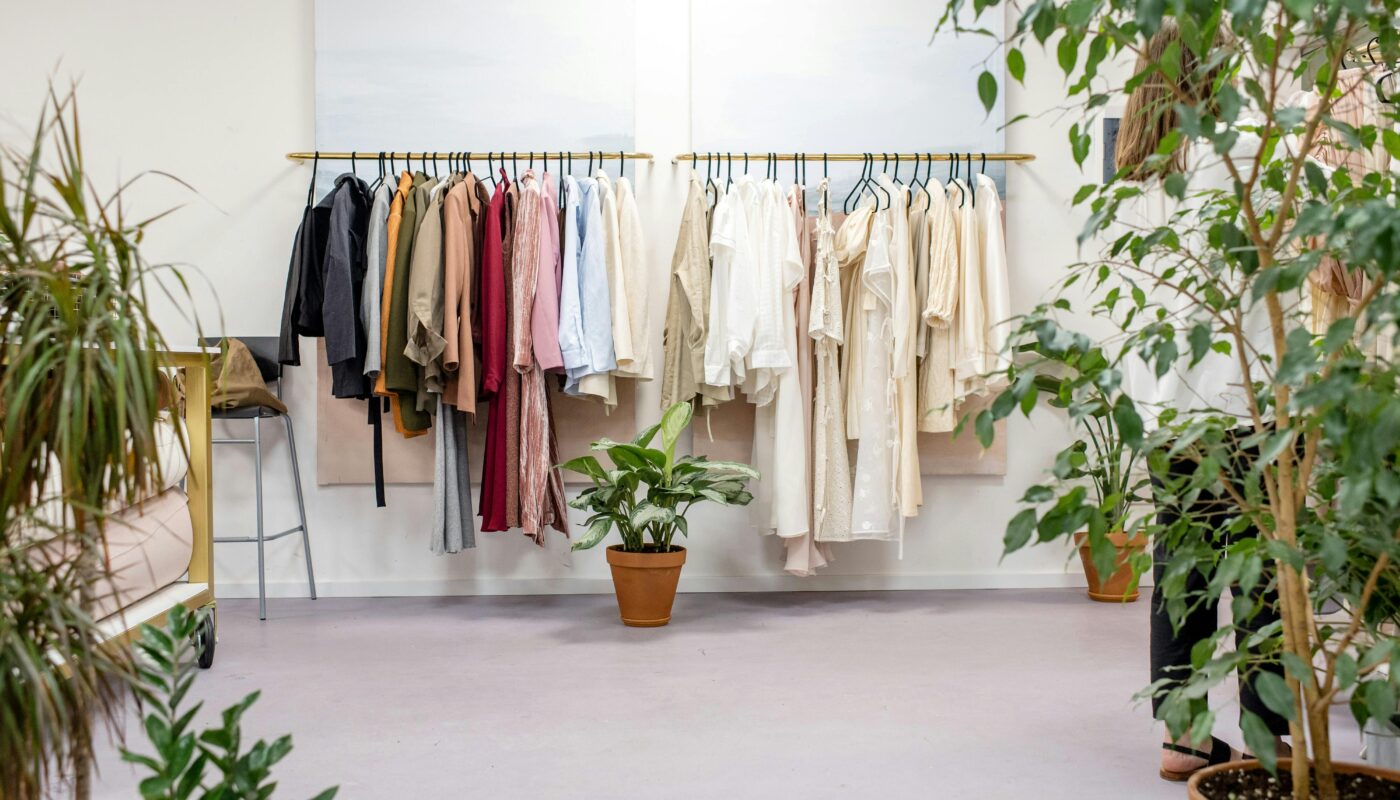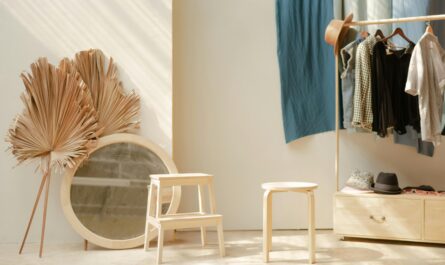In a world increasingly aware of environmental challenges, the textiles industry has begun a significant transformation. Sustainable fabrics are at the heart of this change, offering eco-friendly alternatives to traditional materials while reducing waste, pollution, and resource consumption. This article demystifies sustainable fabrics, exploring how choosing the right materials can benefit both you and the planet.
The Imperative for Sustainability in Textiles
The fashion and textile industries have long been associated with environmental degradation—from water-intensive cotton cultivation to synthetic fibers that persist in landfills. As consumer awareness grows, many are seeking products that minimize environmental harm. Sustainable fabrics answer this call by employing renewable resources, reducing water and chemical use, and often incorporating recycling processes that lower carbon footprints.
Environmental Impact of Conventional Fabrics
Traditional textile production typically relies on resource-intensive practices. For example, conventional cotton requires vast amounts of water and pesticides, while synthetic fibers such as polyester are derived from non-renewable fossil fuels. These practices not only contribute to greenhouse gas emissions but also create long-term ecological damage. In contrast, sustainable fabrics emphasize cleaner production methods, recycling, and the use of natural or regenerated materials that break down more easily after their lifecycle.
Understanding Sustainable Fabrics
Sustainable fabrics are designed with environmental responsibility in mind. They are created from either renewable sources or recycled materials, using processes that minimize water and energy consumption. Here, we explore several popular sustainable fabrics and what makes them stand out.
Organic Cotton
Organic cotton is grown without the use of synthetic pesticides or fertilizers, preserving the health of soil and water sources. By eliminating harmful chemicals, organic cotton farming supports biodiversity and provides safer working conditions for farmers. The reduced environmental footprint also means that organic cotton requires less energy in production, making it a favored choice among eco-conscious consumers.
Benefits:
- Reduced pesticide and fertilizer use
- Enhanced soil health and biodiversity
- Safer conditions for farmworkers
Linen
Derived from the flax plant, linen is one of the oldest and most sustainable textiles known. Flax grows with minimal water and fertilizer, thriving even in poor soil conditions. Linen’s natural durability and biodegradability make it an eco-friendly option. Its lightweight, breathable nature also ensures comfort in various climates, contributing to its lasting appeal in sustainable fashion.
Benefits:
- Low water and chemical usage during cultivation
- Biodegradable and long-lasting
- Naturally antimicrobial and breathable
Hemp
Hemp is another plant-based fiber gaining popularity for its sustainability credentials. It grows quickly, requires little water, and naturally resists pests, reducing the need for chemical interventions. Hemp fibers are robust and versatile, used in clothing, accessories, and even home furnishings. Its minimal environmental impact makes hemp a powerful alternative in the quest for greener materials.
Benefits:
- Rapid growth with minimal water requirements
- Pest-resistant, reducing pesticide dependence
- Extremely durable and versatile
Bamboo
Bamboo is often touted as a sustainable miracle due to its fast growth rate and minimal resource needs. However, the process of converting bamboo into fabric can be less sustainable if harsh chemicals are used. “Bamboo rayon” is a processed form that sometimes involves toxic substances. That said, when manufacturers adopt closed-loop processes that recycle these chemicals, bamboo fabric can be both eco-friendly and luxurious in feel.
Benefits:
- Fast-growing and renewable resource
- Naturally antibacterial and moisture-wicking
- Soft, breathable, and comfortable when processed responsibly
Tencel (Lyocell)
Tencel, also known as lyocell, is made from sustainably sourced wood pulp, typically from eucalyptus trees. Its production process uses a closed-loop system, meaning that nearly all chemicals and water are recycled, drastically reducing waste and environmental impact. Tencel is biodegradable, soft, and durable, making it an excellent fabric for a wide range of applications, from fashion to home textiles.
Benefits:
- Environmentally friendly closed-loop production
- Biodegradable and recyclable
- Soft texture with high durability
Recycled Polyester
As the fashion industry grapples with the environmental downsides of synthetic fibers, recycled polyester has emerged as a sustainable solution. Made from post-consumer plastic bottles or discarded garments, recycled polyester helps reduce plastic waste and lowers dependence on petroleum. While it maintains many of the beneficial qualities of virgin polyester—such as durability and moisture-wicking—it dramatically reduces resource consumption and waste.
Benefits:
- Reduces plastic waste by repurposing discarded materials
- Decreases reliance on fossil fuels
- Maintains high durability and performance standards
The Certifications and Standards Guiding Sustainable Fabrics
Understanding sustainable fabrics also involves recognizing the certifications and standards that validate their eco-friendly claims. These certifications ensure that fabrics meet strict environmental, ethical, and quality standards.
Global Organic Textile Standard (GOTS)
GOTS is one of the most comprehensive textile processing standards available. It covers every step of the production process—from harvesting raw materials to processing and labeling—ensuring that fabrics are produced in an environmentally and socially responsible manner. Products certified by GOTS are free from toxic chemicals and comply with strict labor standards.
OEKO-TEX Standard 100
This certification guarantees that textiles are free from harmful substances, ensuring consumer safety. Although OEKO-TEX does not directly address sustainability in production, it is an important benchmark for fabrics that are intended to be eco-friendly and safe for human use.
Cradle to Cradle Certification
Focusing on a product’s lifecycle, the Cradle to Cradle certification evaluates a fabric’s sustainability based on its ability to be safely returned to the environment after use. This certification encourages closed-loop systems where materials are continuously reused or recycled, aligning with the principles of circular economy.
Navigating the Challenges of Sustainable Fabrics
While sustainable fabrics offer considerable environmental benefits, their production and adoption are not without challenges. Understanding these hurdles can help consumers and manufacturers make better choices.
Cost and Accessibility
Eco-friendly fabrics often come with a higher price tag due to the costs associated with organic farming practices, sustainable processing technologies, and certification fees. As demand for these materials increases, economies of scale may help lower costs, but currently, the price remains a significant barrier for some consumers.
Misleading Claims and Greenwashing
The popularity of sustainable products has unfortunately led to instances of “greenwashing,” where companies make exaggerated or false claims about the environmental benefits of their products. Consumers need to be vigilant, looking for trusted certifications and transparent production practices before making purchases.
Production Complexities
Producing sustainable fabrics requires careful management of resources, technology, and supply chains. For example, even a fabric like bamboo can have varied sustainability credentials depending on the chemicals used during processing. Similarly, ensuring that recycled polyester maintains high quality while being eco-friendly demands sophisticated recycling technologies.
Future Trends in Sustainable Textile Production
The future of sustainable fabrics is promising, with continuous innovations aimed at reducing environmental impact while meeting consumer demand for quality and affordability.
Advancements in Recycling Technologies
As recycling processes become more efficient, the production of recycled fibers—whether polyester or even new bio-based materials—is likely to expand. Advances in chemical recycling, for example, can ensure that fabrics can be broken down and reconstituted without degrading quality, supporting a circular textile economy.
Biofabrication and Lab-Grown Materials
Biofabrication, which involves growing fabrics in controlled environments, is an emerging field that could revolutionize the textile industry. These lab-grown materials bypass many of the environmental hazards associated with traditional agriculture and processing, potentially offering fabrics with a low carbon footprint and superior performance characteristics.
Integration of Smart Technologies
Innovations such as digital printing and automated cutting systems can reduce waste during the manufacturing process. In addition, blockchain technology is being explored to enhance transparency in the supply chain, allowing consumers to track the journey of their fabric from raw material to finished product.
Collaboration Across Industries
The drive toward sustainability is fostering collaborations between fashion brands, textile manufacturers, and environmental organizations. These partnerships can accelerate the adoption of eco-friendly practices and drive innovation in fabric development, ultimately leading to a more resilient and sustainable textile industry.
How to Choose Sustainable Fabrics: A Consumer’s Guide
Choosing sustainable fabrics doesn’t have to be daunting. Here are some practical tips to help you make informed decisions when shopping for eco-friendly textiles.
Look for Trusted Certifications
Always check for certifications such as GOTS, OEKO-TEX, or Cradle to Cradle. These certifications provide assurance that the fabric meets strict environmental and ethical standards. While a certified label might slightly increase the cost, it is a worthwhile investment in both your health and the planet.
Educate Yourself About the Materials
Understanding the basics of sustainable materials is key. Organic cotton, linen, hemp, bamboo (when processed properly), Tencel, and recycled polyester each have distinct benefits and potential drawbacks. By knowing the characteristics of these fabrics, you can better assess which materials align with your values and needs.
Consider the Lifecycle of the Product
Examine the entire lifecycle of a fabric—from production and use to disposal. Fabrics that can be recycled or biodegrade naturally at the end of their lifecycle are preferable, as they contribute less to landfill waste and environmental pollution.
Support Brands with Transparent Practices
Transparency is crucial in the sustainable fabric industry. Brands that openly share details about their sourcing, manufacturing processes, and sustainability goals are generally more trustworthy. Supporting these companies encourages broader adoption of eco-friendly practices within the industry.
Balance Sustainability with Practicality
While sustainability is important, the fabric you choose should also meet your practical needs. Consider factors like durability, maintenance, and comfort. A fabric that is both sustainable and suited to your lifestyle is more likely to be used for a long time, reducing overall waste.
The Broader Impact of Sustainable Fabrics
Embracing sustainable fabrics goes beyond personal health or fashion trends; it is an investment in the future of our planet. Each purchase of an eco-friendly garment supports practices that conserve resources, protect ecosystems, and promote fair labor conditions. When consumers choose sustainably produced textiles, they send a powerful message to the industry: that environmental responsibility matters.
Economic and Social Benefits
The shift toward sustainable fabrics has the potential to create economic opportunities in local communities. Organic farming and sustainable textile manufacturing often require skilled labor, which can lead to job creation in rural and underdeveloped areas. Moreover, ethical production practices help improve working conditions and foster community development, contributing to a more equitable global economy.
Reducing Carbon Footprints
Every sustainable fabric that replaces a conventional one contributes to lowering overall greenhouse gas emissions. From water savings to reduced chemical runoff, the cumulative effects of these eco-friendly choices can lead to significant improvements in air and water quality. In an era where climate change is a pressing concern, these small, informed decisions collectively make a big difference.
Fostering Innovation
The demand for sustainable textiles is driving research and development in new materials and production techniques. This innovation not only benefits the environment but also paves the way for high-performance fabrics that might outperform traditional options. The growing intersection of technology and sustainability in textiles is an exciting frontier that promises to reshape the industry.
Conclusion
Sustainable fabrics are far more than a passing trend; they represent a fundamental shift in how we view production, consumption, and environmental responsibility. By choosing materials that are good for both you and the planet, you contribute to a larger movement aimed at preserving natural resources, supporting ethical labor practices, and driving innovation in the textile industry.
From organic cotton and linen to hemp, bamboo, Tencel, and recycled polyester, each sustainable fabric offers unique benefits that address various environmental challenges. As consumers, our power lies in informed choices—supporting products that are certified, transparent, and designed to minimize environmental impact.
The journey to sustainable textiles is not without its hurdles. Issues like higher costs, potential greenwashing, and production complexities require both industry-wide reforms and individual vigilance. However, with advances in recycling technologies, biofabrication, and smart manufacturing practices, the future of sustainable fabrics is bright and promising.
As you explore your options next time you shop for clothing, home furnishings, or accessories, remember that your choice can have far-reaching implications. Sustainable fabrics not only enhance your lifestyle with quality, comfort, and style but also contribute to a healthier, more resilient planet for future generations. Embrace the opportunity to be part of a transformative movement—one that marries fashion with responsibility and innovation with conservation.
In the end, every fabric tells a story. When you choose sustainable materials, you’re choosing a story of respect for nature, a commitment to ethical production, and a vision for a cleaner, greener world. Let your wardrobe be a testament to the fact that caring for the planet can go hand in hand with looking and feeling great.
By understanding the nuances of sustainable fabrics and recognizing the importance of certifications, lifecycle assessments, and transparent practices, you are better equipped to navigate the ever-evolving landscape of eco-friendly fashion. The choices we make today will shape the textile industry of tomorrow—a future where every thread and fiber is a step toward a more sustainable planet.



